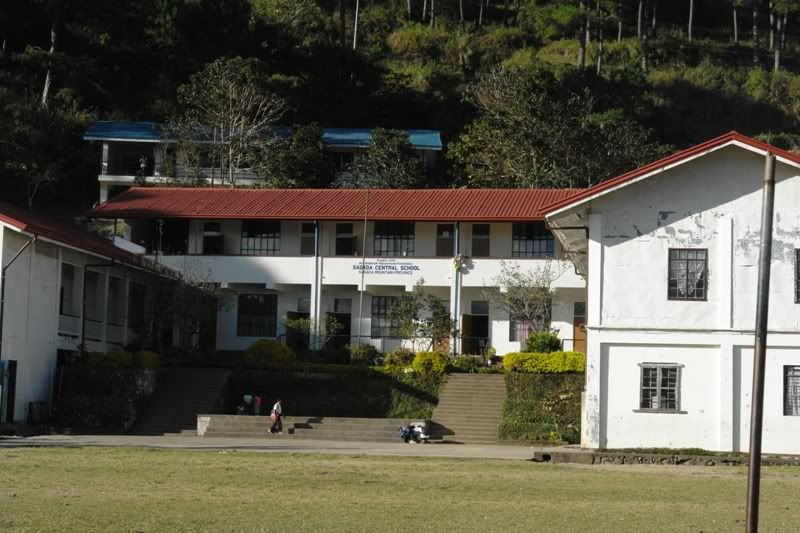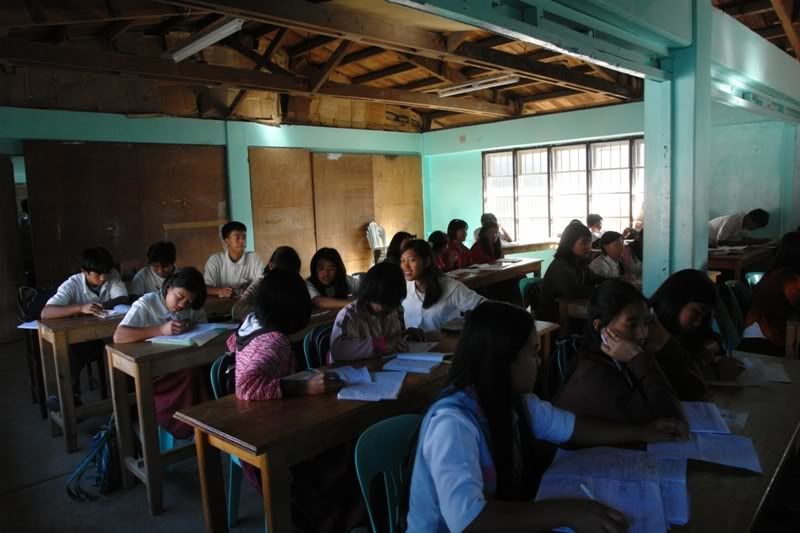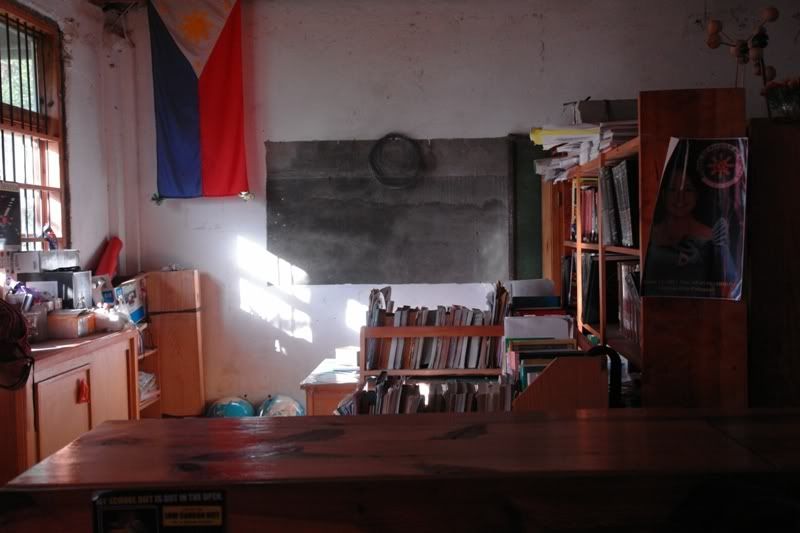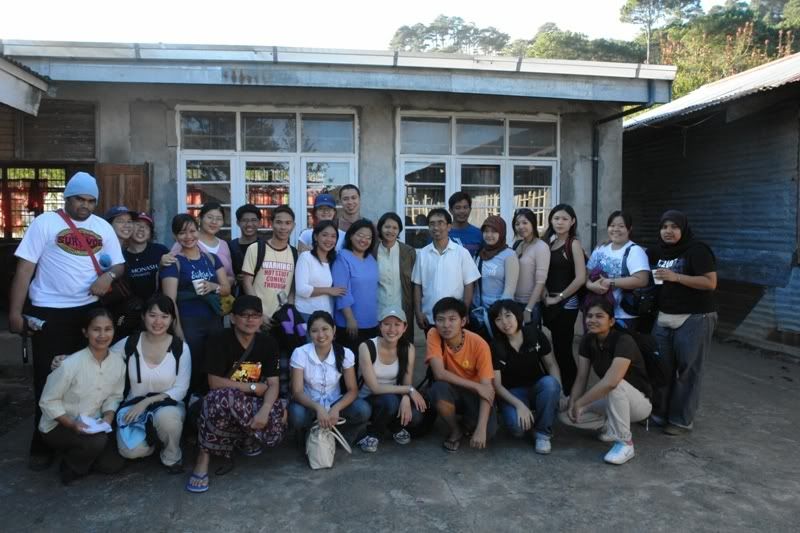
The Sagada National High School is located amidst the high mountains of Northern Luzon Island with an amazing backdrop of lush greenery that is almost foreign to urban schools. (Ed: It’s located on a mountain that was ‘hacked’ away to make space for the school and it’s extra high location has it overlooking the town of Sagada, very cool concept I dare say) It was established back in 1996, hence it is considered to be the youngest high school among the other 5 schools in Sagada.
As the school mainly caters to the local indigenous people and is located at approximately 400km from Manila, one would expect the school to be in need of amenities and its students lacking the sophistication of their city counterparts. In contrast, an average of 2–3 students from the Sagada National High School gains entrance to local universities.
Their curriculum consists of English, Tagalog studies, Math, Science, Technology and Livelihood education, Social Studies, Physical Education and Values (Ed: part of which Father Jerry Bolinget the local priest tells us to be Respect, Responsibility, Identity and Service. Four very main values that is taught as a curriculum to students!). There is an array of activities to help stimulate the student’s mental and physical abilities such as a sport and science club, and a basketball team in which the members are part of the waste management team.
Students have won numerous trophies from maths and writing contest and sports. This is due to the dedication of the teachers such as Sir Joseph Kaligton and Cherr Umaming who even though restrained in terms of resources, try their best to instill as much knowledge as possible to the children of Sagada.

The main form of transportation for the students is by foot and the longest distance that a student has to walk is 30 minutes. This indeed sounds like a feat to us spoilt city kids! In the advent of a typhoon, students will be warned via radio announcements, text messages and through the yelling of neighbours.
High school here is different from Malaysia. The school buzzer buzzes every hour, unlike ours which is only at intervals of 40 minutes. They have 7 hours of classes each day which is almost the same as us. Most students bring their home cooked food to school during break or go home for lunch if they live nearby while you will see the Malaysian students pushing their way through the queue to purchase their meals from the canteen.
As Sagada is an agricultural province, the students are also involved in farming. Therefore, during harvesting season some students will be absent from classes to help their parents in the farm and a written letter is needed from the parents to affirm that. According to Sir Joseph, there are times when students who stop their schooling to farm would not return to school indefinitely but the number has slowly dropped as students become more aware of the importance of education.

Sexual education has also recently been introduced to the students but this has lead to some minor conflicts with some parents as the Igorots are a conservative people. The Catholic Church has also strongly opposed sexual education by boycotting the arrival of text books meant for the school and the reason given is that sexual education promotes the use of birth control.
The dedication and devotion that the teachers have for their students is admirable and is a far cry from our local teachers. The teachers are sincerely concern with the welfare of their students while ours are just teaching us for the sake of getting paid.
In Sagada National High School, it is where we see the stories about teachers who change the lives of students, coming true. As quoted in their website, the Sagada National High School is committed to:
E: Equip the students with necessary skills to prepare them for competitive life
A: Advocate the development of core values
G: Guide students to discover the relevant talents and skills for maximum productivity
L: Link the community with programs geared towards the preservation and development of indigenous cultures
E: Enhance the individual’s creativity and critical thinking through academic excellence.
The teachers in Sagada National High School truly offer a personal touch in the education of the future generations of Sagada to ensure a bright future for the region and its people.

By Erica & Jojo


























1 comment:
i'm gonna make my own journal
Post a Comment